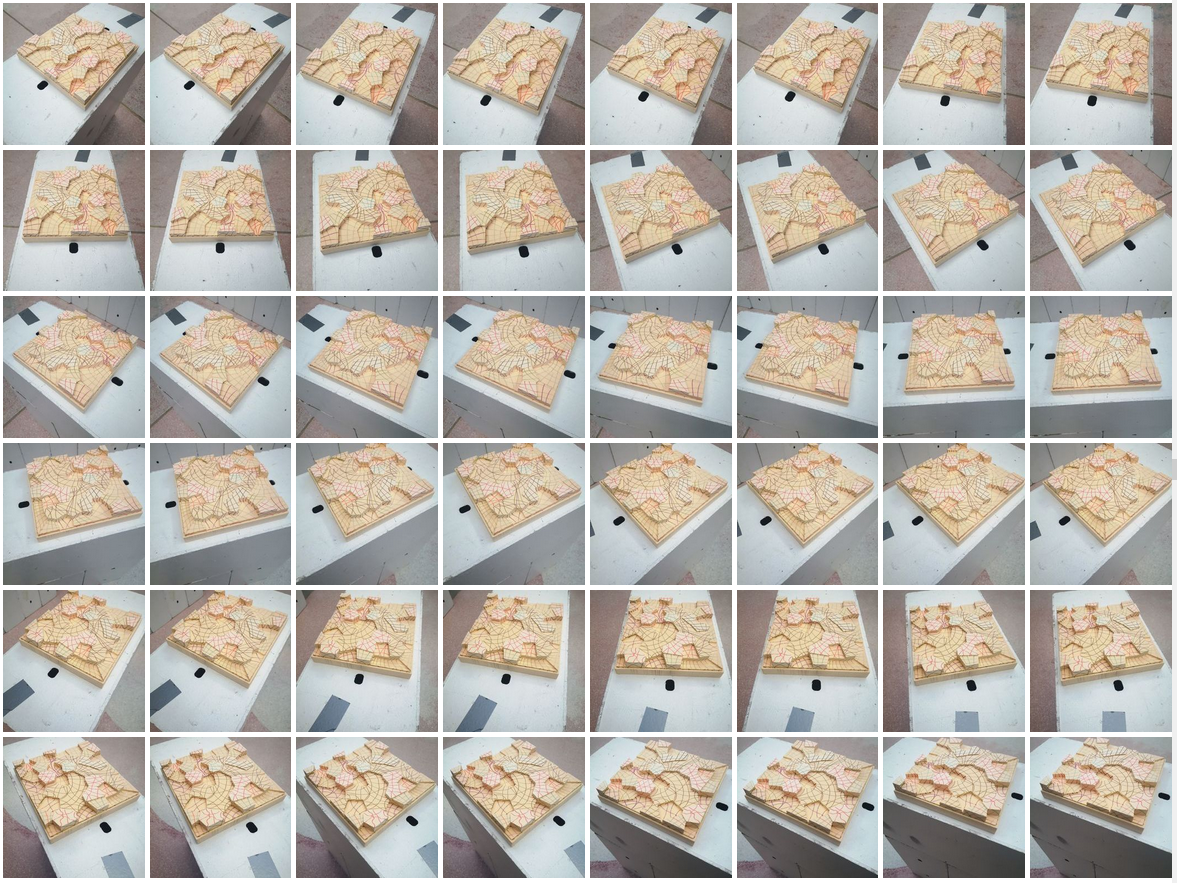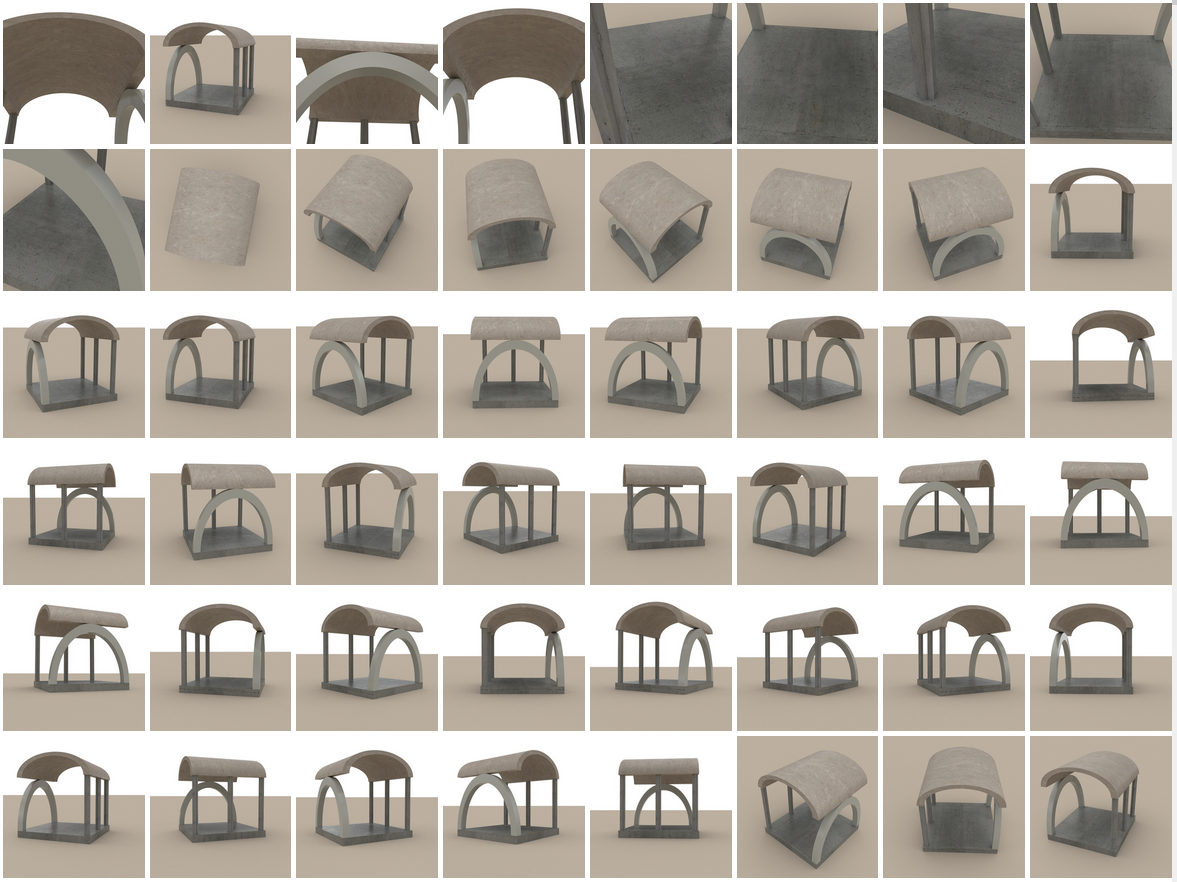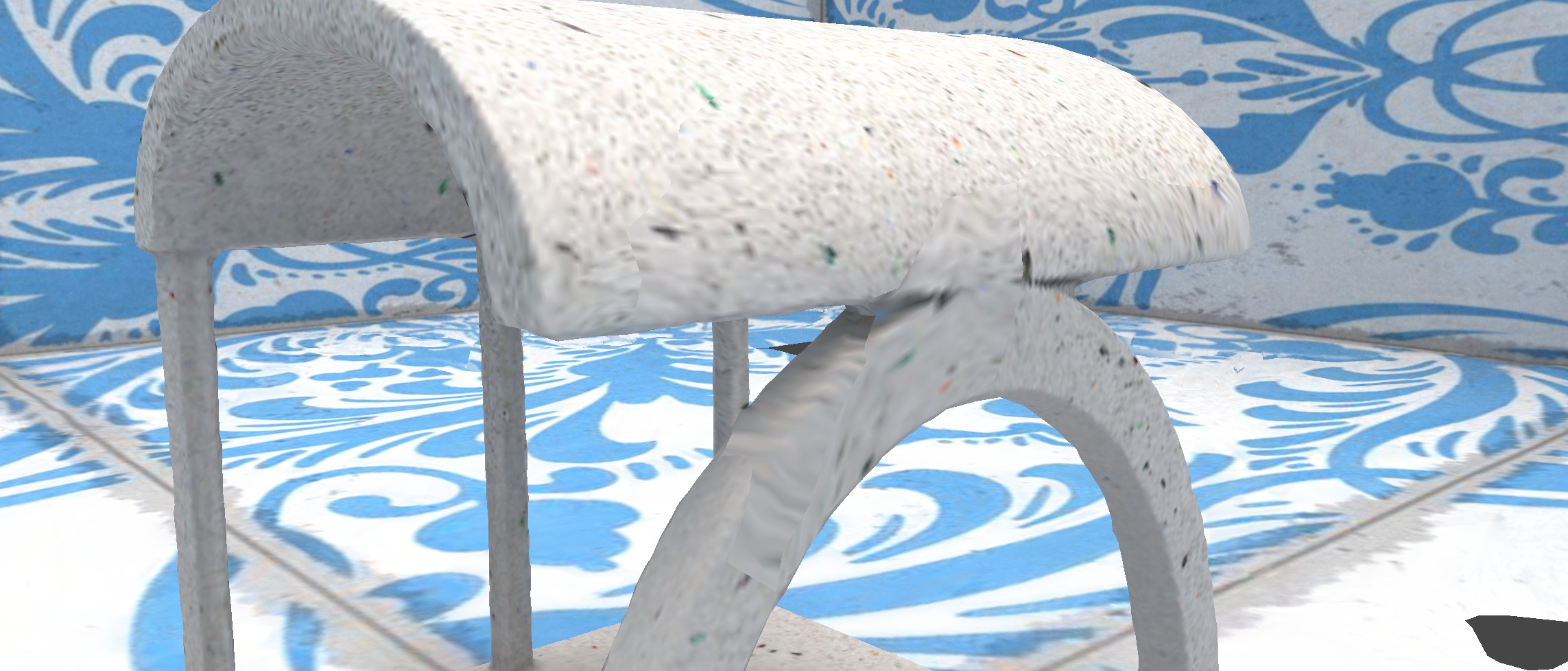DIGITAL WEATHERING:
The potential of error in a new method of architectural representation
[This project explores a potential novel method for representing decay through weathering in architecture, by using the errors that appear in the process of copying]
Glitch Architecture and its Potential for Digital Weathering
Glitch architecture is an approach to architecture where the digital glitch (error) is used as a generator or inspiration for design. In a paper by Schnabel and Haslop (2018) is described a method of generating a 3-dimensional form from an improperly decoded JPEG-file, where the grid system that makes up the file is used as data-input for a Grasshopper script. While the method is interesting in that it moves from the common 2-dimensional to the more uncommon 3-dimensional interpretation of glitching, there is a tenuous connection between the image used as input and the resulting architectural form.
This has been my general impression of the field of glitch architecture—the source of input can often seem arbitrary and disconnected from what would usually be the input that generates architecture—e.g. use, users, or site. At other times, the addition of the glitch is, or appears to be, surface level, impressed on an already existing or already designed building. Such is the example of the House of Electronic Arts in Basel from 2015. While the use of the building ties well with the use of glitching as generator for design, it is not integrated with the use of the building—it merely creates an interesting image.
There seems to be some potential in this space to find meaningful connections between the digital glitch, either more full integration with the building and its use, or connecting deeper to issues of consequence in architecture.
In the same period that I was reading about glitch architecture and the post-digital, I was also developing an interest in the relationship between time and architecture, of which one aspect is the aging, weathering, wear and resulting decay that affects all built objects. One idea that I had for a potential project was to make a monument that changes over time, to create an emotional connection to time through the use of architecture. As I would not be able to actually age a building I would have to find ways to imagine or simulate how the built object would change. Here was an imaginable use of the glitch—could glitching be used to simulate, or sufficiently represent, decay through weathering?
On Time, Entropy, Copying and Weathering
Time and Entropy
Entropy, a measure of disorder, is intimately connected to time. Stephen Hawking (1988) writes that “The increase of disorder or entropy is what distinguishes the past from the future, giving a direction to time.” According to Hawking, the direction of entropy provides the basis for our psychological understanding of time. Entropy is irreversible—we know that a glass that has fallen on the floor could never be spontaneously “unbroken”. This has been expressed in the 2nd law of thermodynamics, which says: “entropy never decreases in a large system, over a significant period of time.” For these reasons entropy is sometimes called an “arrow of time”—increasing disorder is an indicator of passing time.
Entropy and Copying
Francesca Hughes writes in The Architecture of Error (2014) “Nowhere does the role of entropy become more acute or more loaded than in the business of reproduction, architectural and other.” On the whole, Hughes’s book deals with the chasm that has opened up between potential precision and material reality, due to the introduction of digital tools to the discipline of architecture. She writes “the humble, almost negligible error, always starts small but has an infinite capacity for growth in its effect. It is in the nature of error to spread, to register its cumulative presence, to occupy a continuously expanding space as long as it exists unchecked”. Error has not been much explored as a beneficial element in architectural practice (to my knowledge!), it is rather something that architects struggle against. In other areas too, error is a scourge; in analog recording for example, recording equipment and storage mediums have limitations on quality of capture and storage. As copies (and copies of copies) are made, the decrease in signal quality is added up—this is called generation loss. Digital images too can suffer from generation loss—a JPEG-file that is copied many times can display significant error over time. (Atis Telecom Glossary, 2013) However, if not in architecture, error and entropy have been explored in art, such as in Alvin Lucier’s “I am sitting in a room” (1969) where Lucier recorded himself speaking and then recorded the sound of the recording several times over. (Joseph, 2015; UbuWeb, n.d.) Another example is Xerox Book by Ian Burn (1968), where Burn scanned and printed a blank page repeatedly, creating a compounding pattern on the page. (The National Gallery Australia, n.d.)

Weathering and Copying
Weathering is the cumulative process in which the effects of the weather imparts wear on (building) objects. Mostafavi and Leatherbarrow write in their book On Weathering (1993), arguing that the effects of weathering should be used in a purposeful manner;
In the process of subtracting the “finish” of a construction, weathering adds the “finish” of the environment.
[…]
In the time after construction, buildings take on the qualities of the place wherein they are sited, their colors and surface textures being modified by and in turn modifying those of the surrounding landscape.
[…]
The effects of these marks can be retarded through inventive
solutions… or they could respond to the effects of the weather by creating situations that both recognize and utilize the ever-changing characteristics of materials as a way of renewing beginnings by allowing refinishing.
I see in the description of weathering as given by Mostafavi and Leatherbarrow an analogue to copying; if weathering “adds the finish of the environment through subtraction from wear and addition of dirt”, then it might be said that copying “adds the finish of the environment through subtraction from the limitations (in precision) of the copying method and addition of circumstantial artifacts”.
Strategy
The aforementioned similarity between copying and weathering has allowed me to create a strategy for exploration of weathering effects:
To explore the concepts of entropy (disorder indicating time) in an iterative mode—copying in and between modes of physical and/or digital representation—to create a possible method of representation of wear and weathering.
This may be achieved by repeating the same steps over and over, or using different methods in sequence.
A note on delimitation; my focus is on exploring/developing a potential method—not on designing a structure. The idea is that this method, if working and fully developed, could later be applied to built objects to represent the aged building ahead of time.
Tactics
Digital-Physical flow
Using photogrammetry and digital-to-physical fabrication in an iterative manner, to create errors that may spread and accumulate.
Example Process:
Digital model 🠒 CNC-milling 🠒 Physical object 🠒 Photogrammetry 🠒 Digital model 🠒 Repeat Process
Digital-digital flow
Using digital tools in an iterative manner, to create errors that may spread and accumulate.
Example Process:
Digital model 🠒 Render images 🠒 Photogrammetry 🠒 Digital model 🠒 Repeat Process
Experimental work
Digital-Physical flow
Initial object, a simple extruded shape.
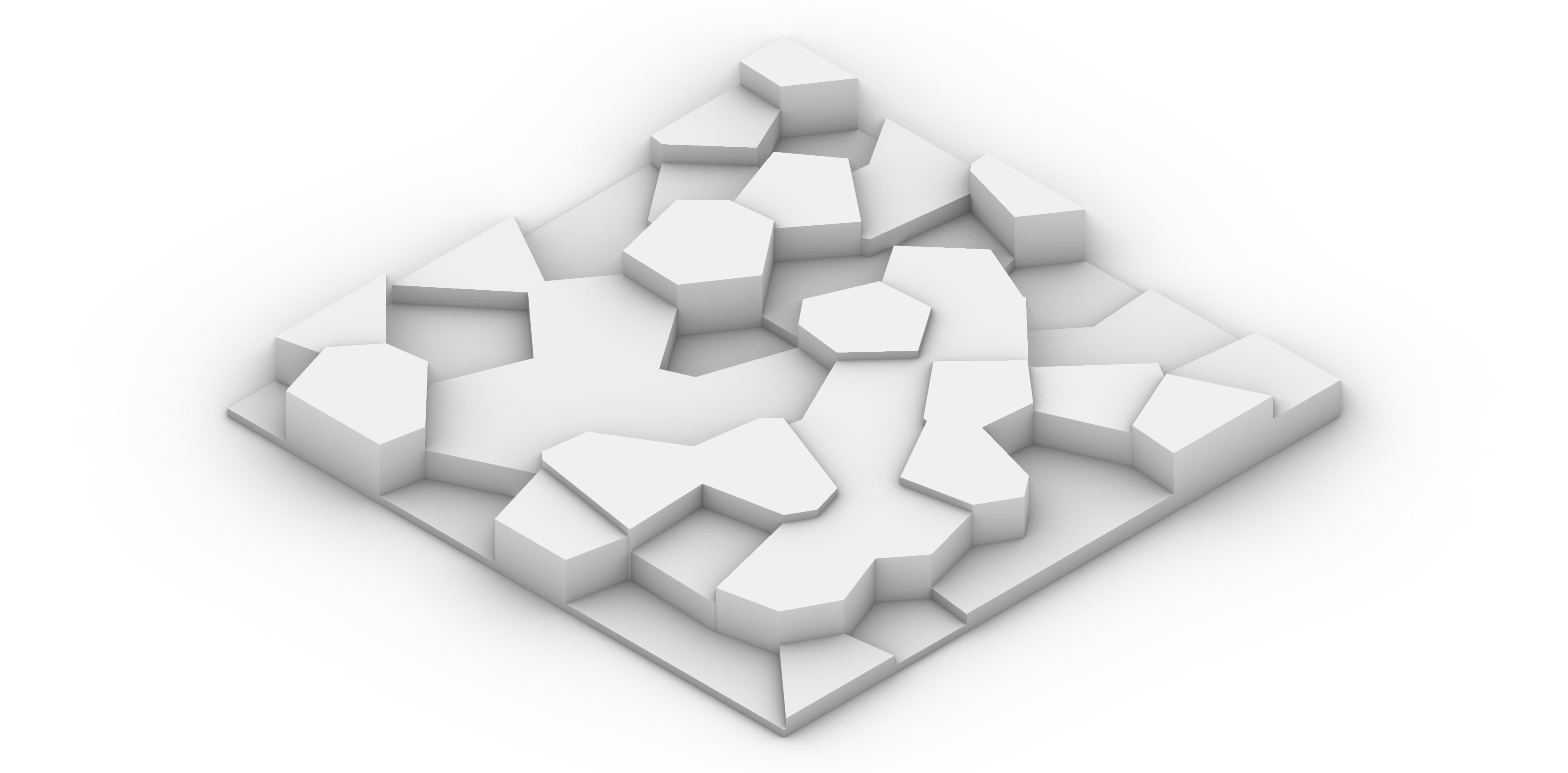
Iteration 1
The model was fabricated using a CNC-mill. All the following iterations were milled with the same settings, using a 4mm diameter flat drill-bit. The material used is a smooth polystyrene foam. The method of CNC-milling in foam was chosen due to it being relatively fast. The drawback of CNC-milling is that the mill used can only drill from the top, and not from the sides.
Here the first physical iteration of the model can be seen, a subset of images for photogrammetry. As it is known that the photogrammetry software can have a lot of issues with areas of low contrast and similar color, I drew with a felt-tip pen on the model.
The images were loaded into MetaShape to perform the photogrammetry, resulting 3D-model below.
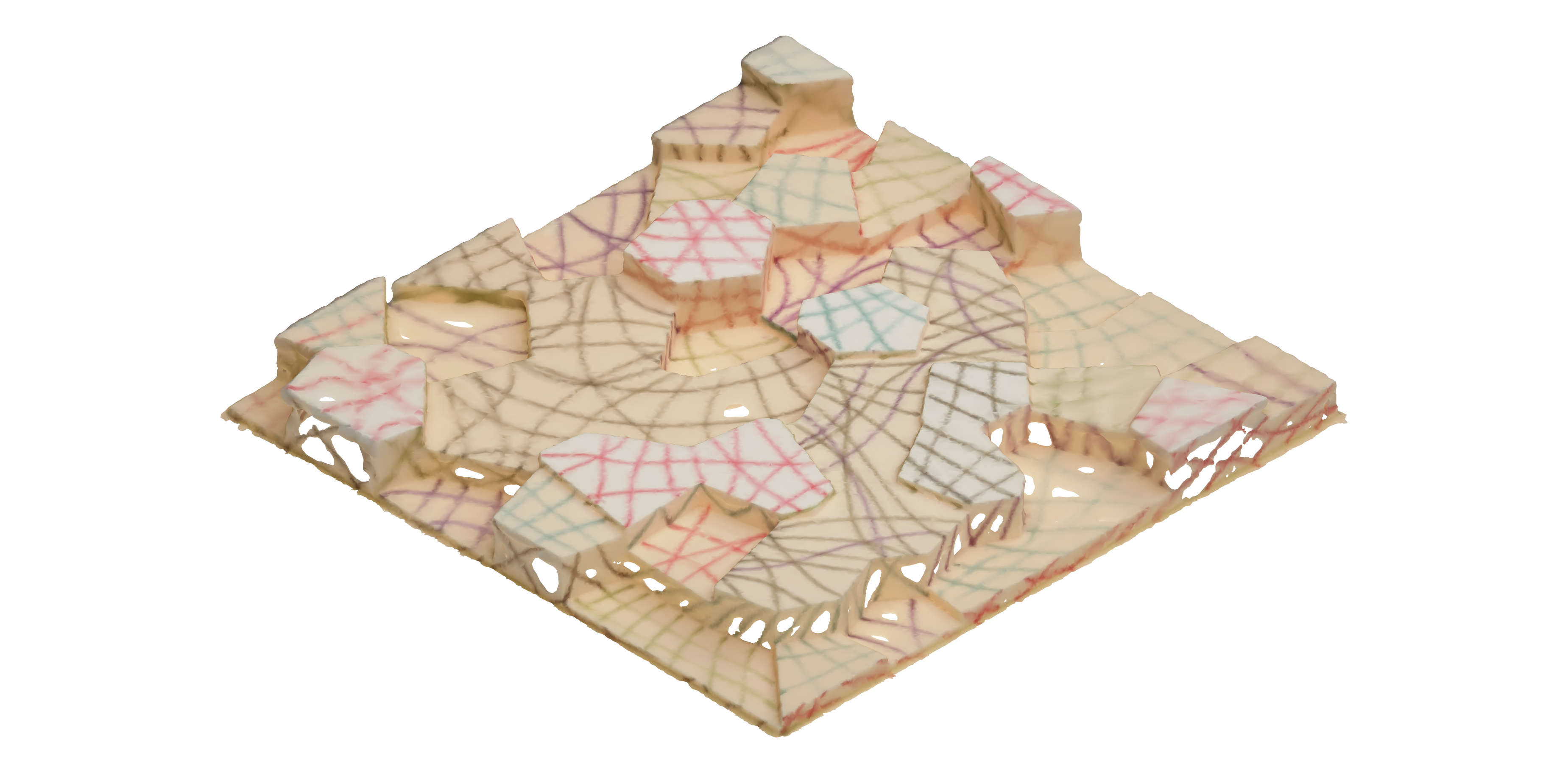
Iteration 2
Again the 3D-model was milled. Second physical iteration seen below, painted with acrylic paint this time to see how it might change results.
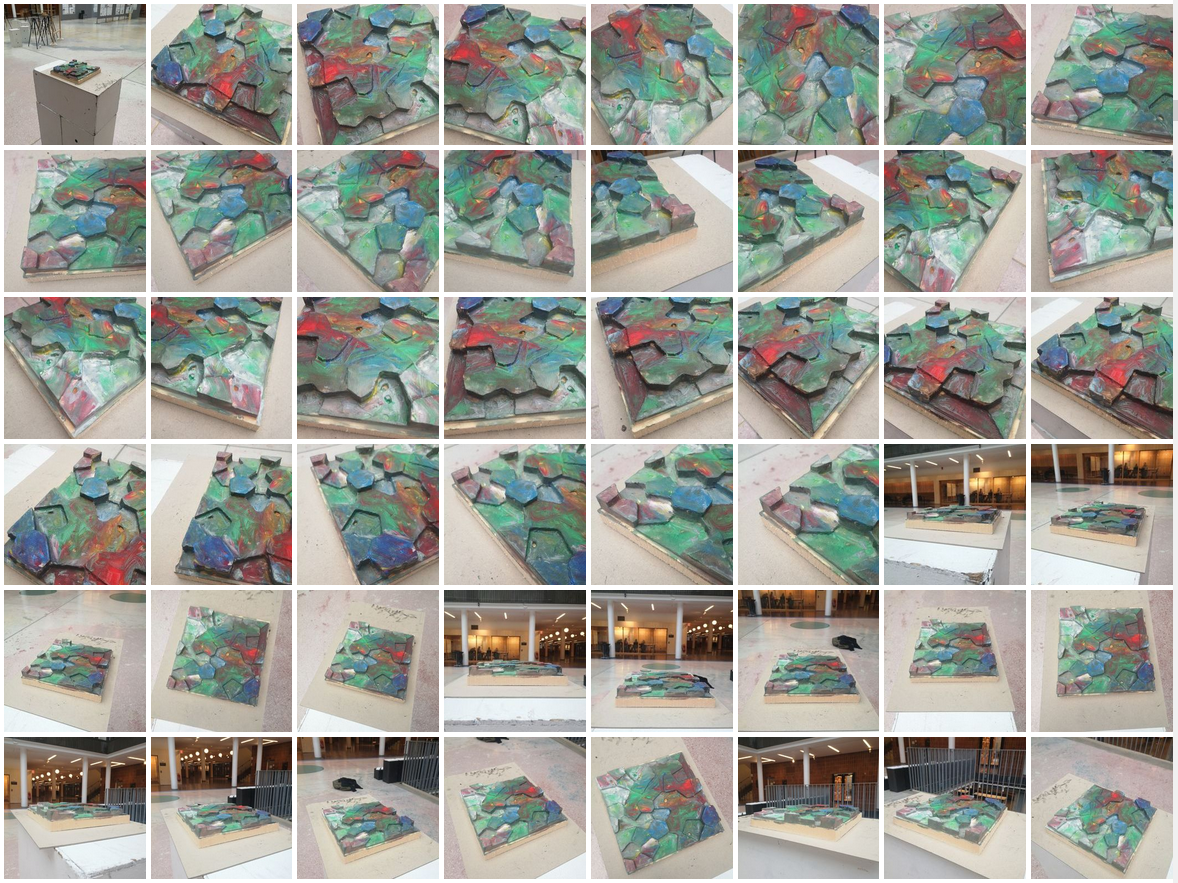
Resulting 3D-model after photogrammetry.
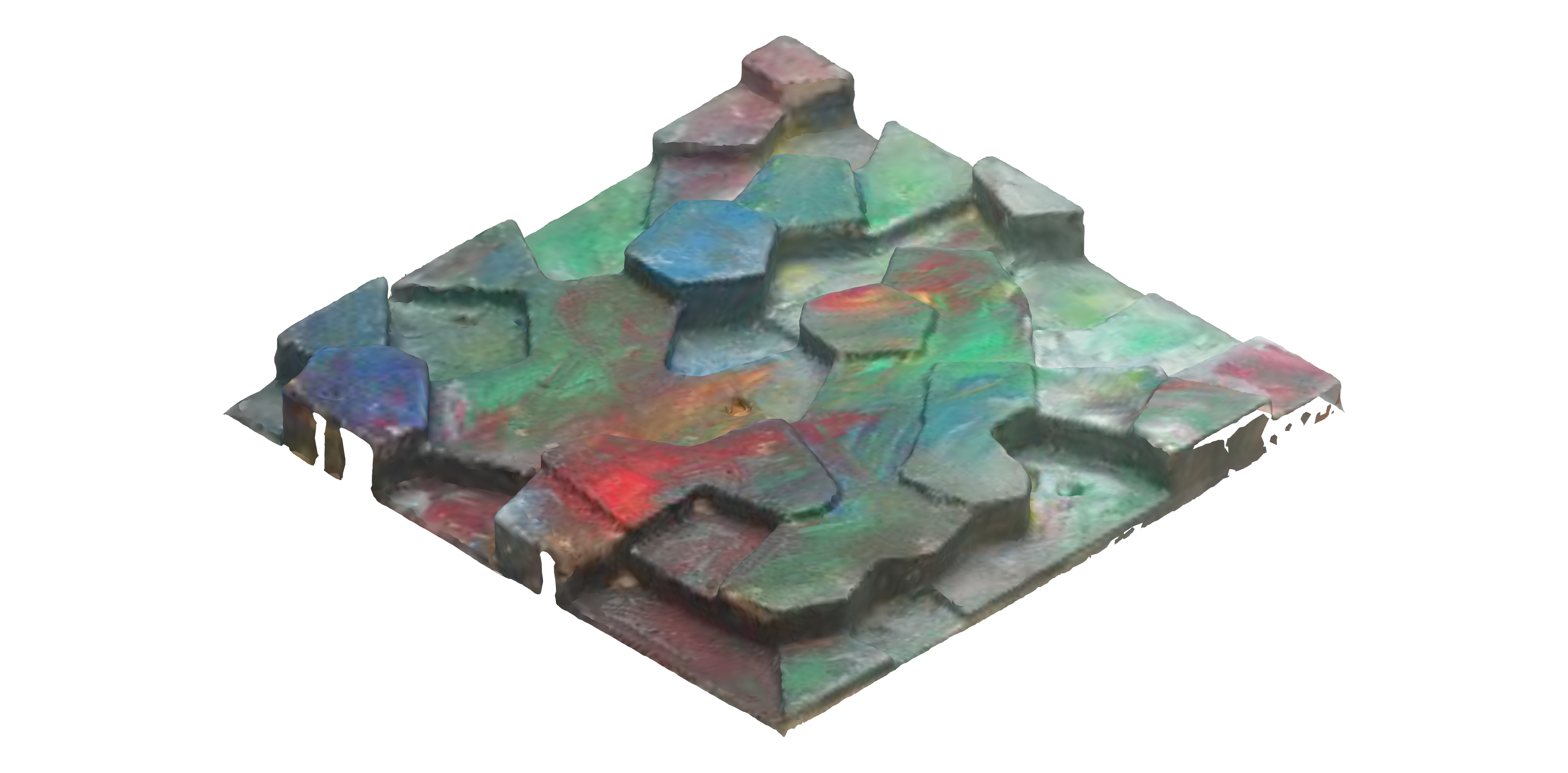
Iteration 3
Again the 3D-model was milled. Second physical iteration seen below, painted with aquarelle this time to see how it might change results.
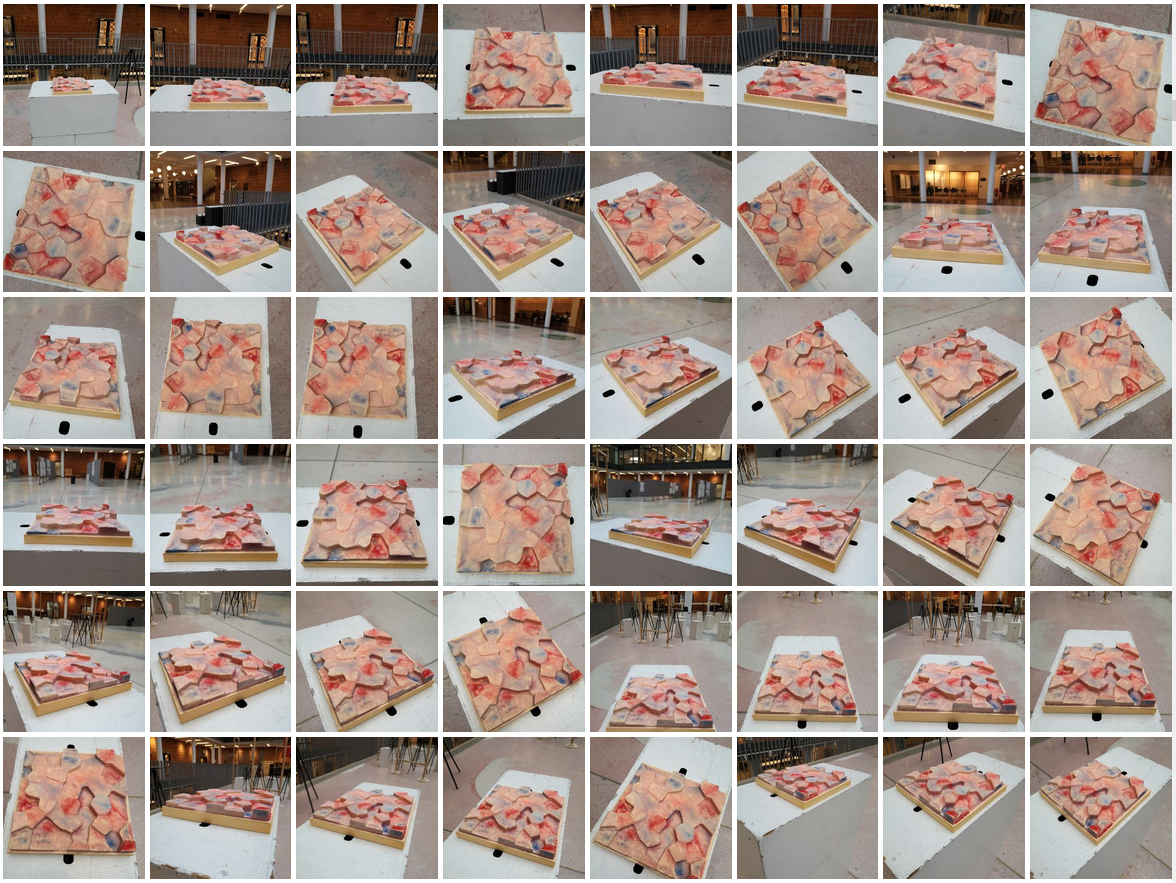
Resulting 3D-model after photogrammetry.
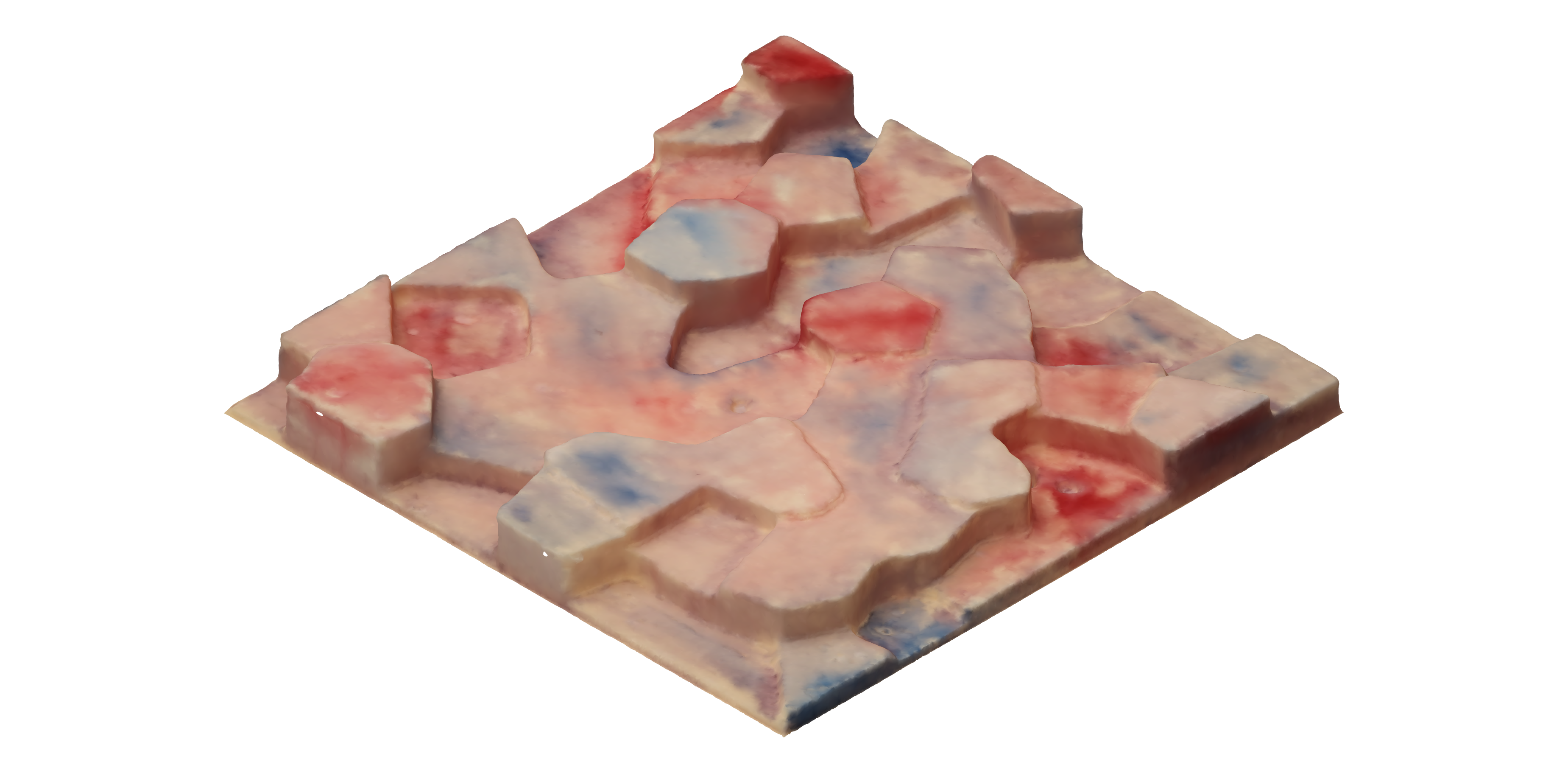
Iteration 4
Again the 3D-model was milled. Second physical iteration seen below, this time not painted at all.
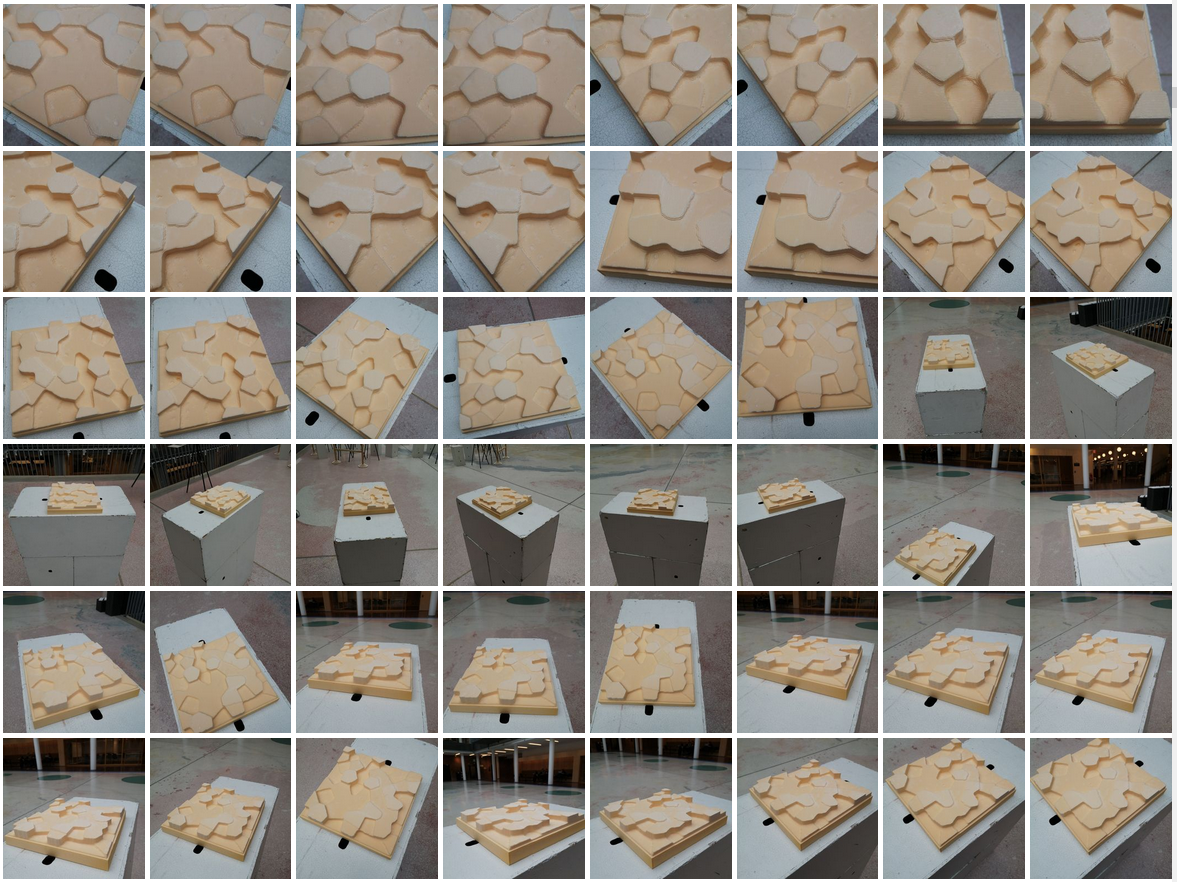
Resulting 3D-model after photogrammetry.
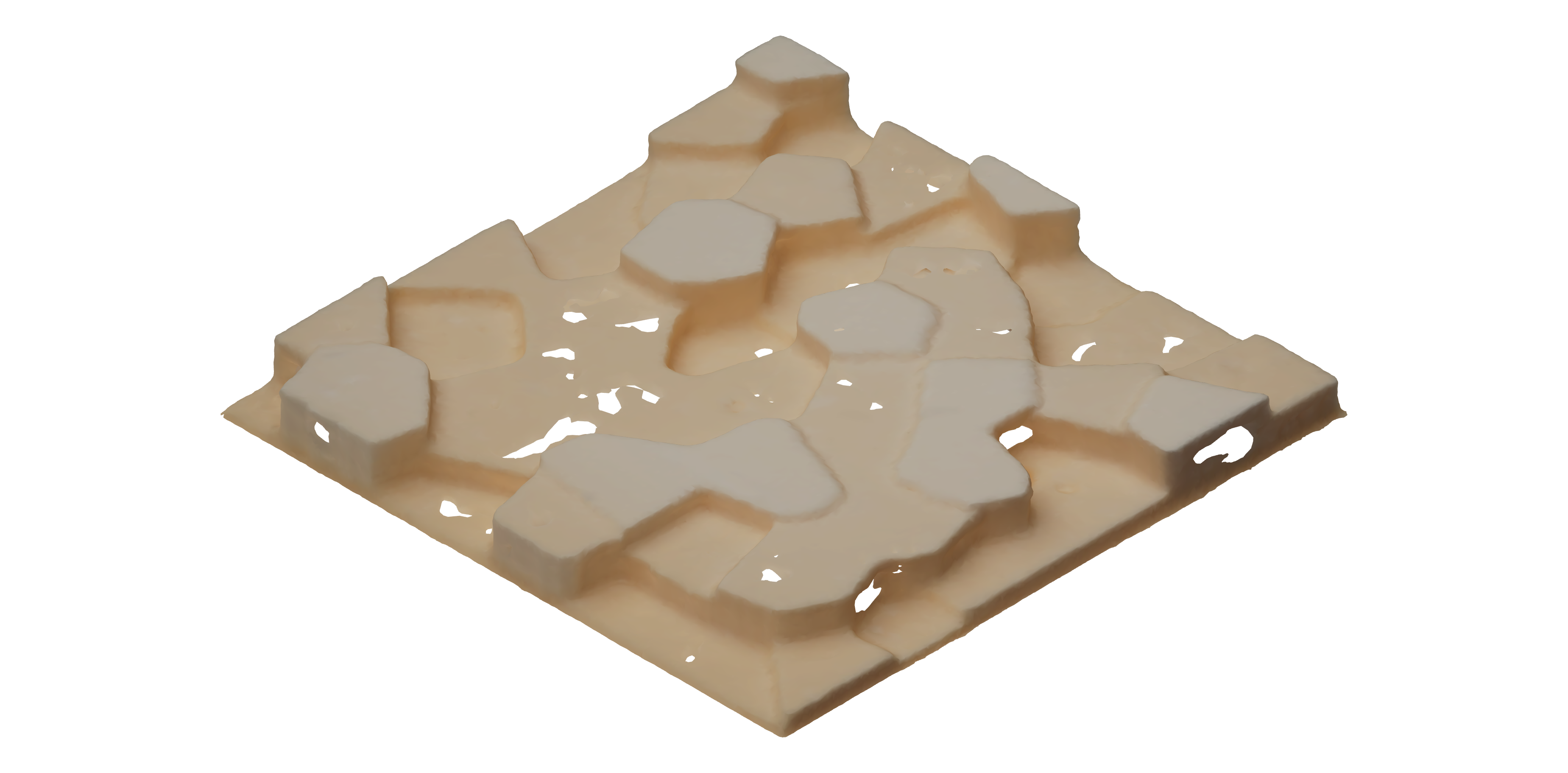
Digital-digital flow
Here the digital model was copied through rendering images of the digital model from many view points and then using photogrammetry to create a new digital 3D-model. I did not work with iteration in this exploration as I had first planned. Instead I worked more with varying the shape, background and patterning of the object to learn more about what makes the photogrammetry process “work”, with the idea that this might give clues about how to creatively “break” the process.
First attempt
Here I made a very simple building structure to see how the photogrammetry software would handle working with the rendered images. A selection of rendered images can be seen below.
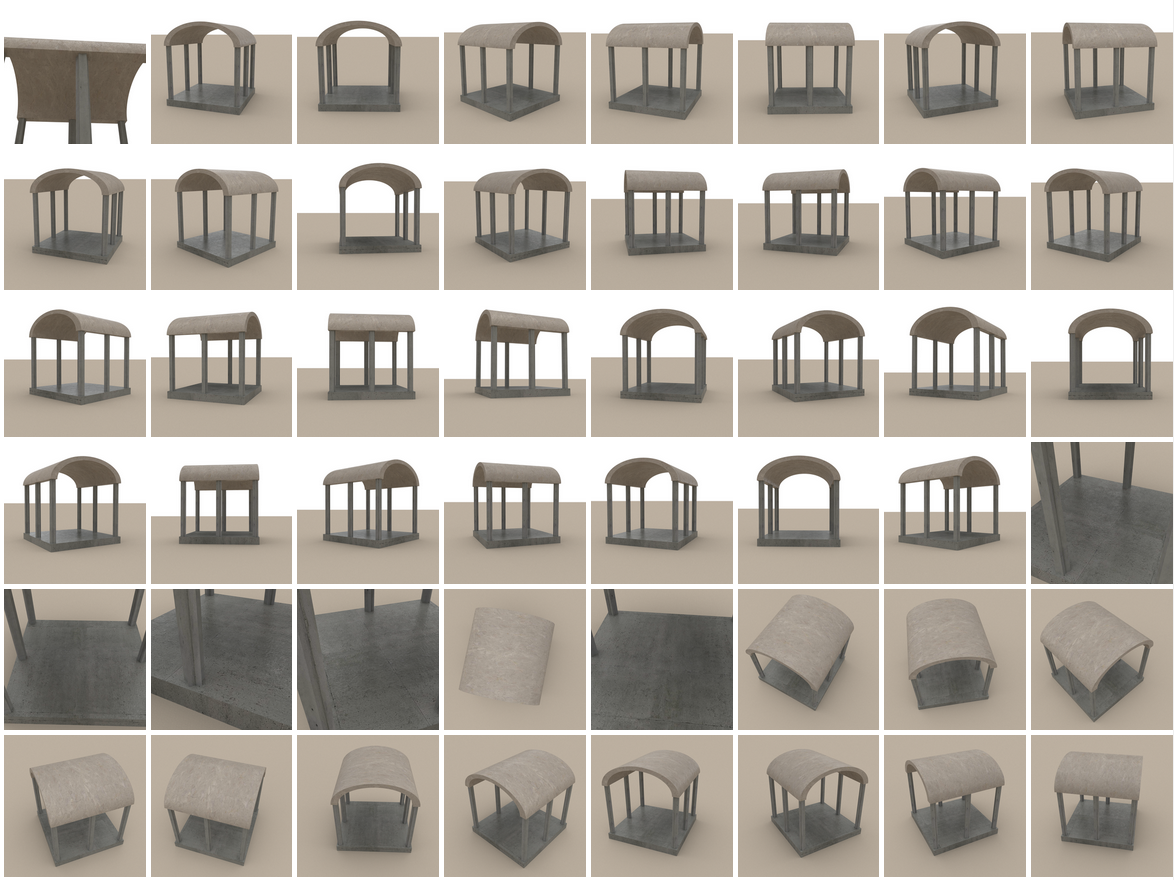
Resulting 3D-model below.
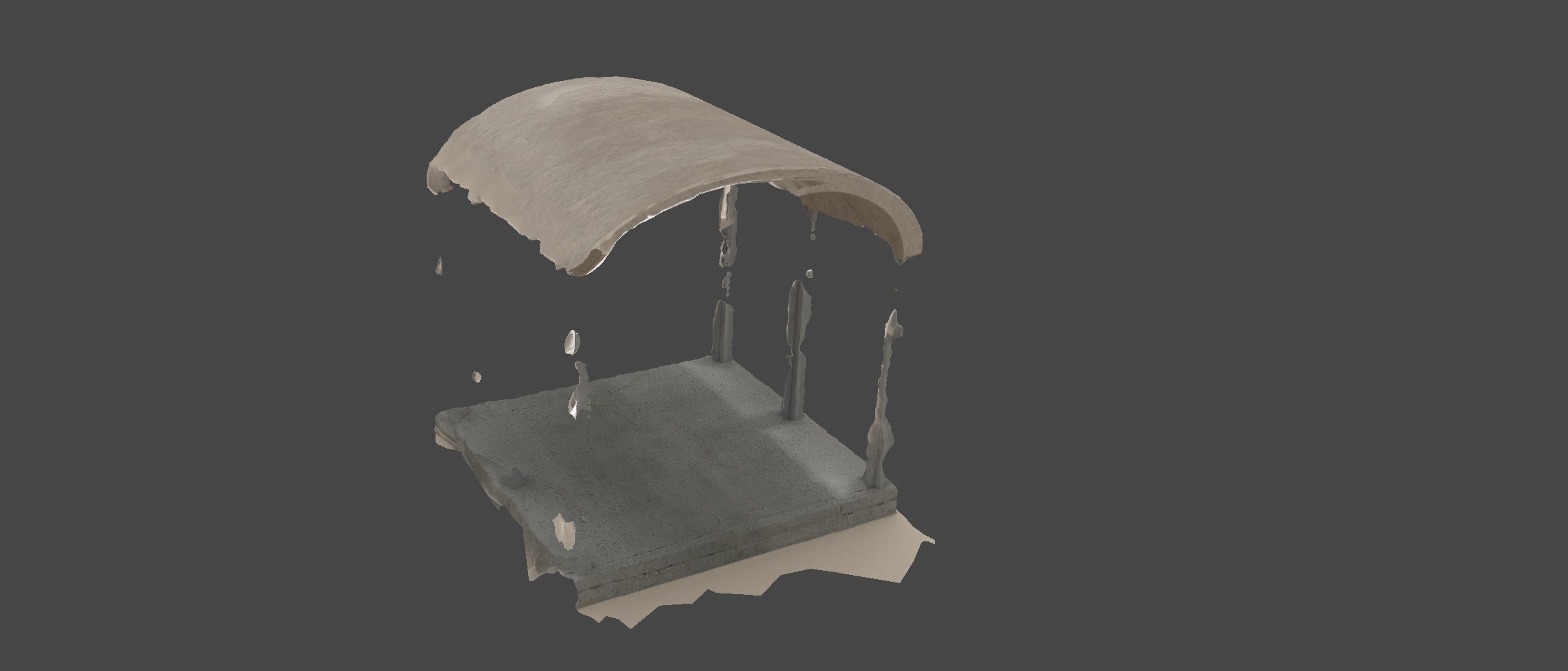
Some parts of the building are almost completely disappeared here, the symmetrical structure may be to blame.
Second attempt
As the photogrammetry software had a lot of issues dealing with symmetrical structure, I made a second version of the building that was slightly more varied.
Resulting 3D-model below.
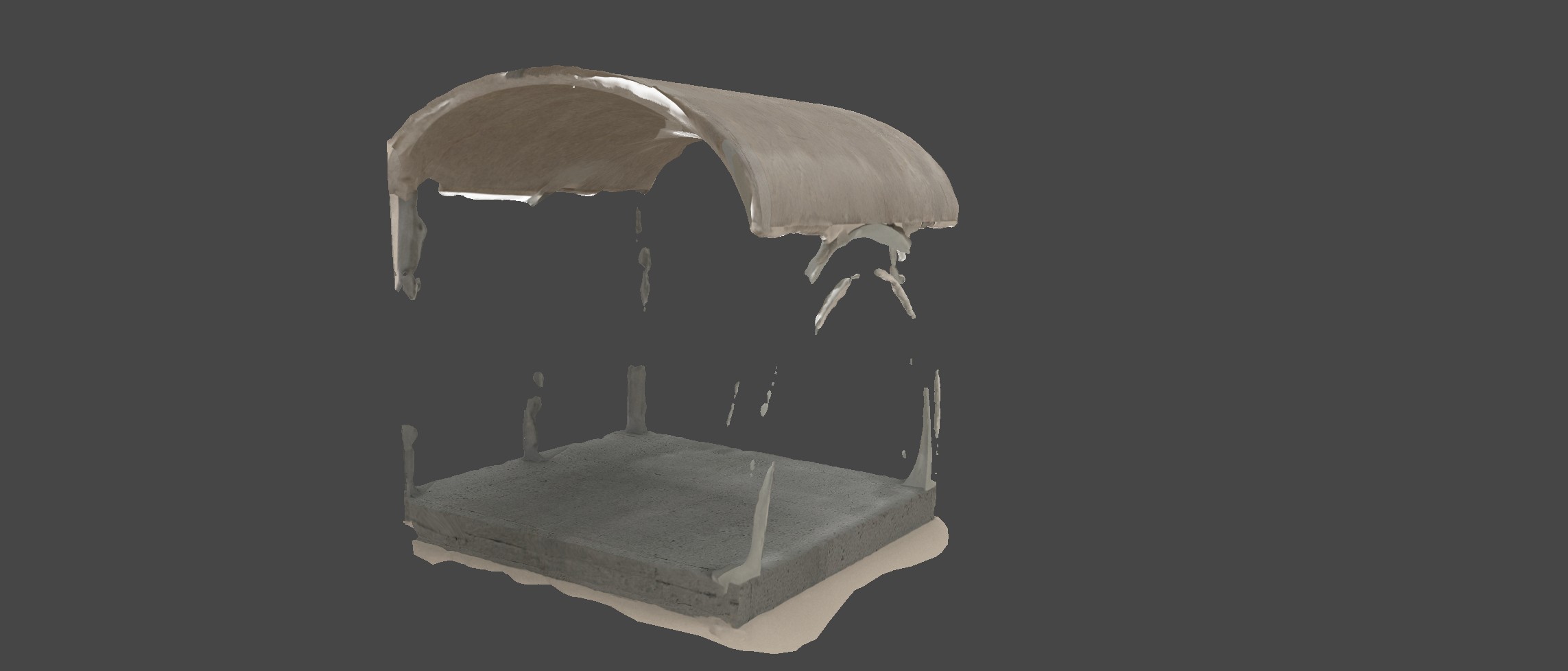
Here the shape of the object is recognizable, even though a lot of information is missing. The less symmetric structure seems to have helped a bit.
Third attempt
The photogrammetry software also seems to have difficulty with stitching the images together due to the single-color background. I made a third version of the exploration with a strongly patterned background, as well as a more strongly patterned material.
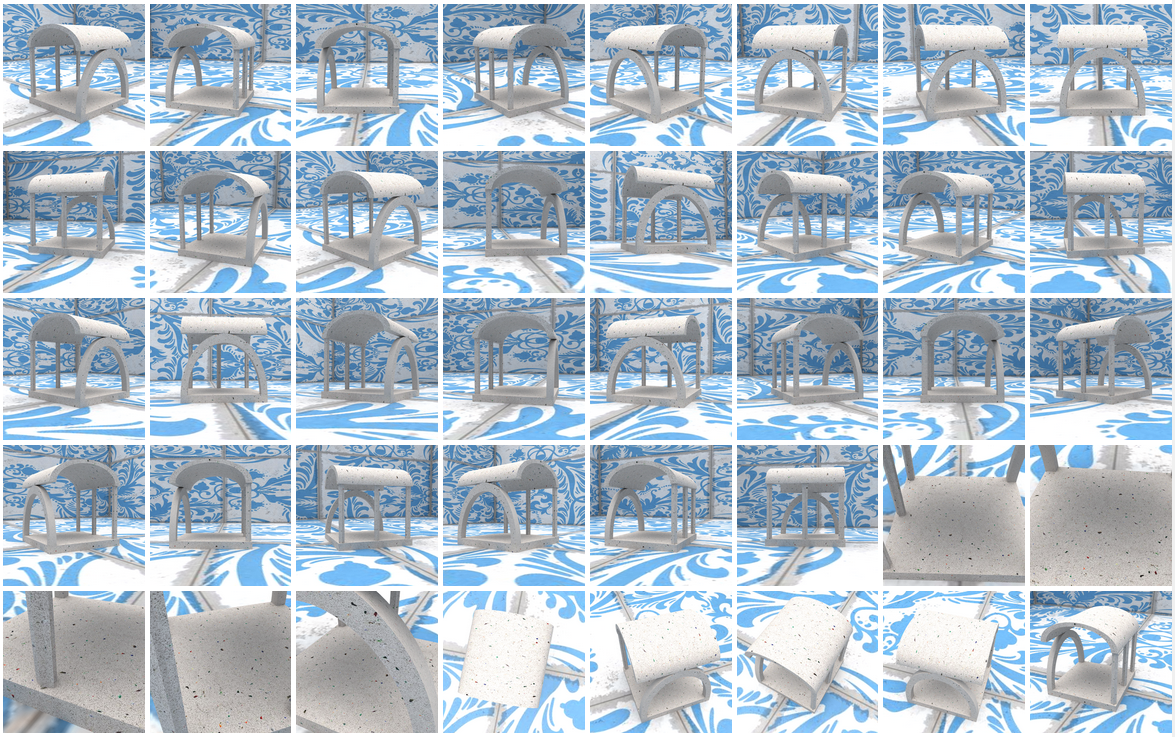
Resulting 3D-model below.
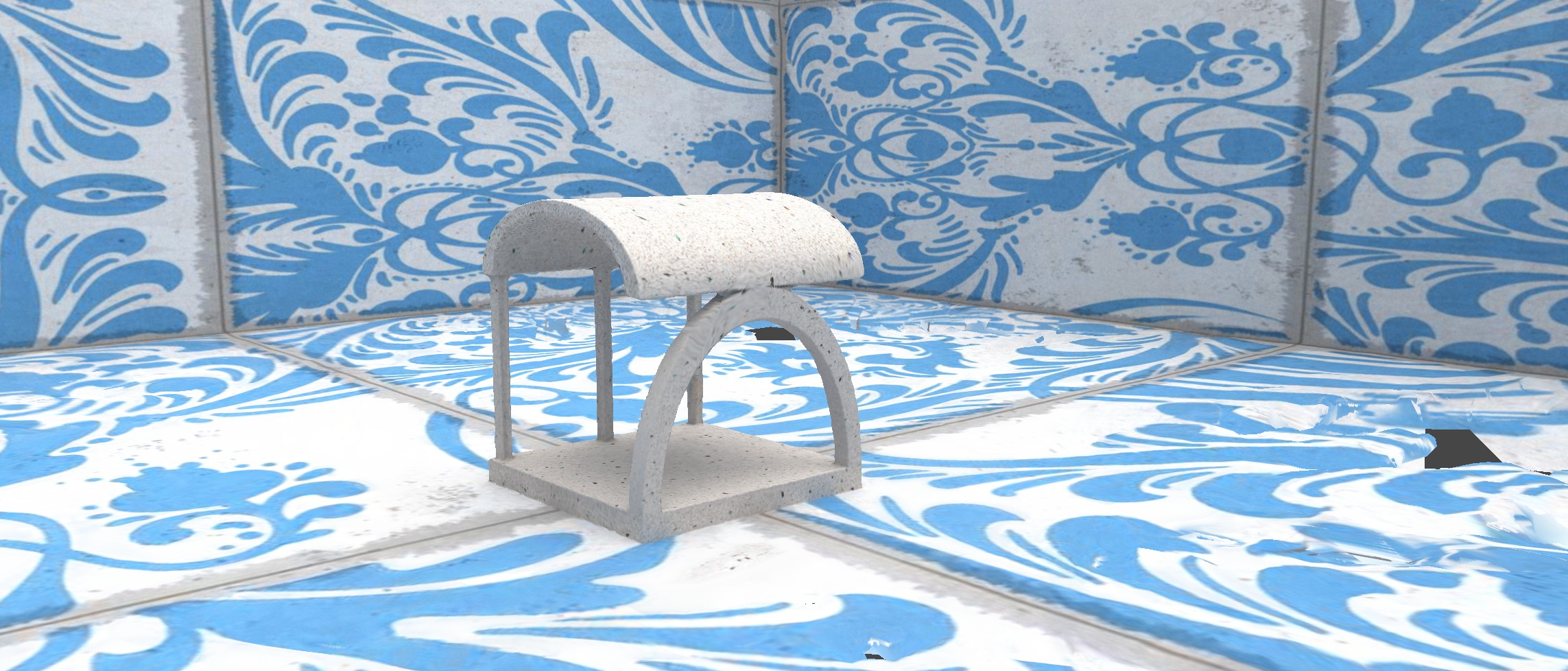
Detail view, which shows that there is some blurriness and distortion, as well as softness around edges.
Overall, the result of this attempt had quite accurate results.
Discussion
These are the points for evaluation that I wrote before beginning work on the project:
- What (representational) artifacts are produced from the different methods? What is lost in each step? What is added?
- What interventions have to be introduced to make translations between physical-digital and the reverse possible? Which limitations are workable, which are breaking?
- What are the limitations that appear in working with the
- Real object
- Physical-to-digital methods
- Digital-to-physical metods
- Digital-to-digital methods?
- Does there seem to be a likeness to the real world effects of wear and weathering?
In the digital-physical flow I was surprised at the high fidelity of the results of the photogrammetry process. It is known that photogrammetry software often has a lot off issues with smoothness, low detail and low contrast, such as that of the polystyrene foam used for milling. Due to this I started with drawing on the model from the first iteration, as the images might otherwise be unintelligible to the software. This turned out to not be such a cause for worry. In the last iteration, when I tried not painting or drawing on the model at all, it worked out fine with a moderate amount of change. After going through the process I am interested in how the outcome would have been had I never treated the surface of the model. This might have provided more accumulation of error, and given an interesting result. There would also have been the possibility to treat the surface in a way as to confuse the software more, e.g. treating the surface with a reflective coating.
The method of fabrication used, CNC-milling, limited the result of accumulating errors. The CNC-mill used can only mill from the top. For this reason holes and imperfections on vertical surfaces created in the photogrammetry process, were not included, as the mill would ignore such holes. To get around this, further experimentation might use other fabrication methods, such as 3D-printing, or a mill with rotational axis. This would also be a necessity when working with building structures, as they are seldom completely flat on the sides.
The digital-digital flow proved to be more sensitive to error than the digital-physical flow. Mostly it seems that the background has a large impact on the photogrammetry result, with single-colored background causing the software to not to be able to stitch the images together. Materials in the digital model can be chosen freely, which opens up a potential area for exploration for reducing or increasing error. If using an iterative process in the digital-digital flow it could also be interesting to work with the bitmaps from the photogrammetry. These could be manipulated to create further effects.
Now to the question of the correspondence of the results to real effects of decay through wear and weathering. I do believe that the process could be adapted to at least resemble the weathering of some materials—there are still many aspects of the process to explore and develop!
References
- Schnabel, M. A., Haslop, B. (2018). Glitch architecture. International Journal of Architectural Computing, 16(3), 183–198.
- Abrons, E., Fure, A. (2017) Postdigital materiality In Borden, G.P., Meredith, M. (Eds.). Lineament: Material, Representation, and the Physical Figure in Architectural Production (1st ed.). Routledge. https://doi.org/10.4324/9781315680392
- Hawking, S. (1988). A brief history of time. Bantam Books.
- Hughes, F. (2014). The Architecture of Error : Matter, Measure, and the Misadventures of Precision. MIT Press.
- Atis Telecom Glossary (2013, March 13) Retrieved from archive.org; https://web.archive.org/web/20130313223237/https://www.atis.org/glossary/definition.aspx?id=5003
- Joseph, M. (2015, January 20). Collecting Alvin Lucier’s I Am Sitting in a Room. https://www.moma.org/explore/inside_out/2015/01/20/collecting-alvin-luciers-i-am-sitting-in-a-room/
- UbuWeb. (n.d.) Alvin Lucier. Retrieved December 1, 2021from https://www.ubu.com/sound/lucier.html
- The National Gallery Australia (n.d.) Ian Burn Xerox book #1. Retrieved December 11, 2021 from https://
searchthecollection.nga.gov.au/object?uniqueId=33720 - Mostafavi, M., & Leatherbarrow, D. (1993). On weathering : life of buildings in time. MIT Press
Figures
- JPEG Generation Loss from https://commons.wikimedia.org/wiki/File:JPEG_Generation_Loss_rotating_90_(stitch_of_0,100,200,500,900,2000_times).png
